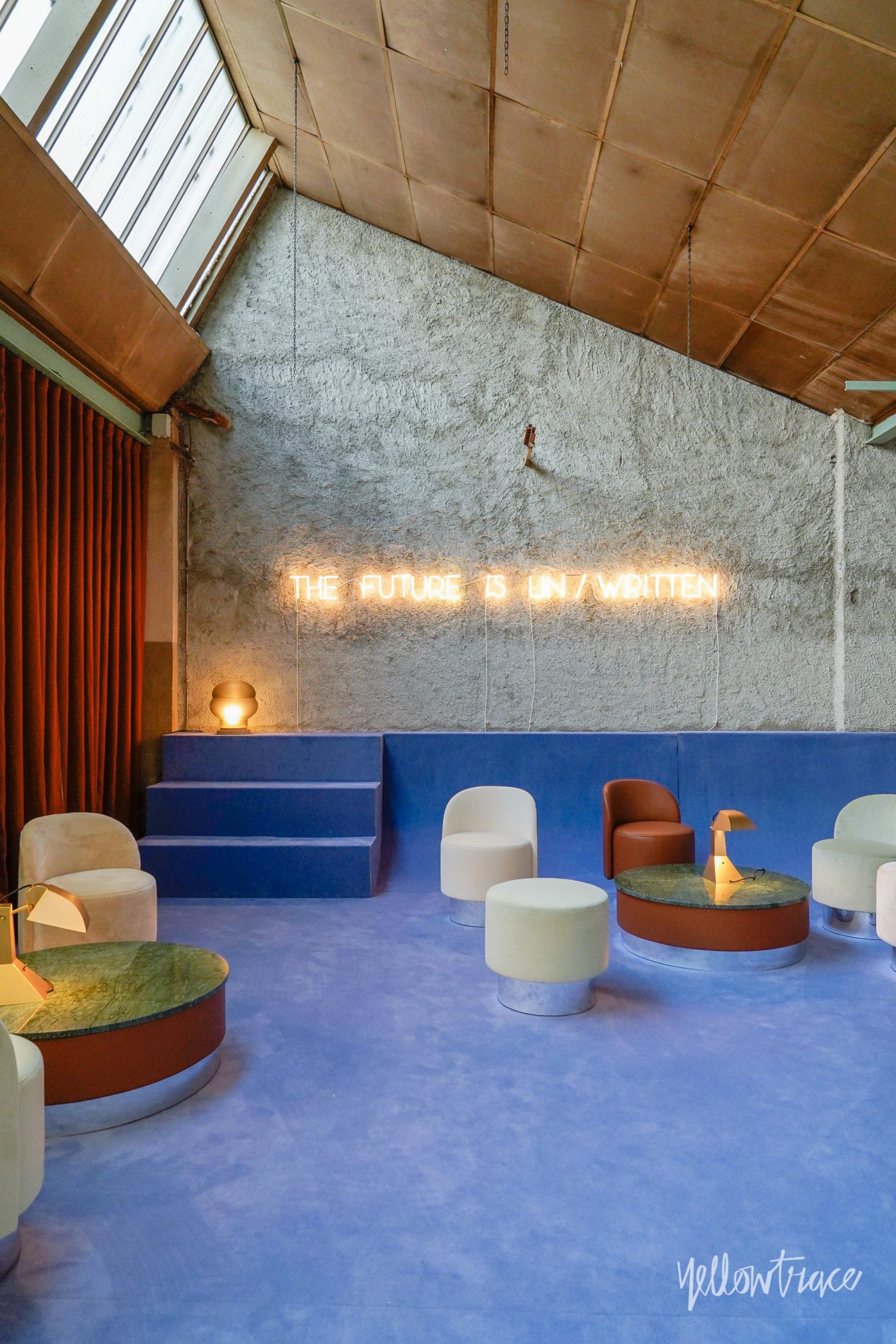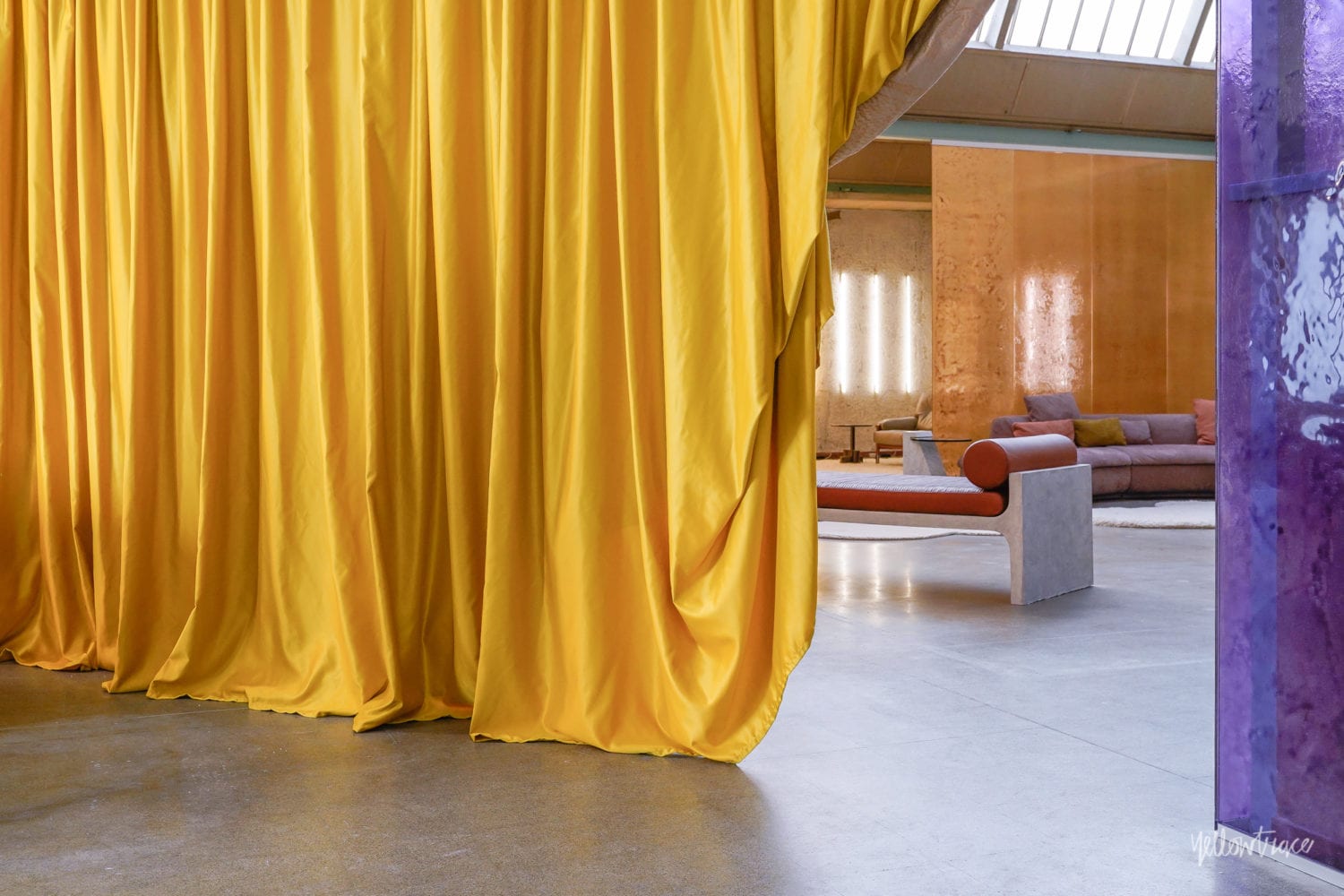#HTE
In what was one of Milan Design Week 2019’s standouts, local design agency Studiopepe, took literal and conceptual inspiration from artisanal materials for their manifesto project. Dubbed ‘Les Arcanistes – The Future is Un/Written’, the large installation unfolded across two levels of an abandoned factory never before accessible to the public.
Guided by the principles of alchemy, the Milan-based design agency, conceptualised an immersive experience that investigated the man’s connection with the matter and the power of symbols. What was most striking about this presentation is Arianna Lelli Mami and Chiara Di Pinto’s signature ability to bring together unusual elements, like rarely-seen colour combinations, a thrilling melange of materials and confident shapes introduced through furniture, lighting and art.
The installation was named after the Arcansistes, who were essentially chemists before the term existed that held the guarded knowledge of formulas to create porcelain and work with materials such as glass and metals. Driving home the theme, the presentation was held inside a large industrial space that was a former gold factory in the early 1900s.
Related:
Welcome To MILANTRACE 2019.
Highlights From Milan Design Week 2019.
















Les Arcanistes was split amongst a sequence of spaces: the Source of the Vibrational Water, the Materioteca, the Alchemic Laboratory and the Mantica Society. In collaboration with partners including Atelier Areti, Ceramica Bardelli, cc-tapis and Tacchini, Studiopepe designed a path around the objects on display in varying installation rooms. Bespoke pieces, re-editions of historical works, and art evoked the connection between archetypes and cultural symbols of power.
Reminiscent of a science lab, abstract arrangements depicting alchemic processes give way to more conservative settings which showcase the rituality of contemporary living. For one vignette, Cassina’s sleek Beugel chair is paired with lush baby-blue armchairs by Baxter and marble vessels by Erika Cavallini in an eclectic, but not inconceivable office setup.
The most mystical sect of the installation leaned into the rituals of divination, a practice suspended between the rational and the irrational since Renaissance courts and through to Jungian psychoanalysis. A round room on a lower floor hosted Società Mantica, for whom the rituals of tarot are linked to symbols, matter, and discovery. Studiopepe intended for visitors to use the tarot reader as ‘a tool for personal growth’. Veiled by a wispy curtain with soft salt floors and all-white furniture, the room felt like a ‘safe space’ to dive into a little prophetic Q&A.
See more from Studiopepe on Yellowtrace here.



















































[Photography © Nick Hughes/ Yellowtrace.]
The post Les Arcanistes: Studiopepe’s Captivating Manifesto Project at Milan Design Week 2019. appeared first on Yellowtrace.
http://www.yellowtrace.com.au/les-arcanistes-studiopepe-milan-design-week-2019/

